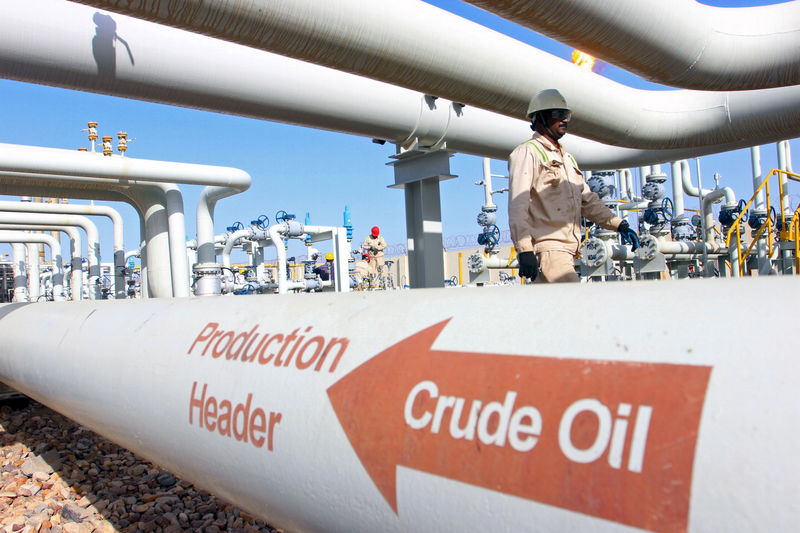Commodities
Oil prices stumble to second straight weekly loss on easing Middle East tensions


© Reuters.
Investing.com — Oil prices fell Friday, racking up a second-straight weekly loss as easing concerns about Middle East supply disruptions took center stage offsetting the boost from a swing lower in the dollar following a weaker monthly jobs report.
By 2:30 ET (18:30 GMT), the futures settled 2.4% lower at $80.51 a barrel, while the contract fell 2.4% to settle at $84.89 a barrel.
Crude dives for second-weekly loss as Middle East risk premium deflates
The two crude benchmarks fell 4% and 6% respectively, marking their second consecutive week in red, after a lack of escalation in the Israel-Hamas war eased worries about a disruption to supplies in the Middle East.
Israel was still carrying out a major ground assault on Gaza, while world powers attempted to broker a cease-fire to get some humanitarian aid into the war-torn region.
Iran also called for an oil supply embargo against Israel, while Israel continued to carry out a major ground assault on Gaza, but other members of the Organization of Petroleum Exporting Countries have failed to agree with this call.
Additionally, while a private sector survey, released earlier Friday, showed China’s expanded at a slightly faster pace in October, official numbers earlier in the week showed China’s unexpectedly contracted in October.
Dollar slide on weaker monthly jobs report fails to help crude stem losses
Oil prices were offered little respite despite a more than 1% fall in following data showing the U.S. created fewer jobs than expected last month, ramping up bets that the Fed is unlikely to resume rate hikes.
The U.S. economy added 150,000 jobs during the month, down from a revised figure of 297,000 in September and below the expected 180,000.
“Given Powell’s dovish tone at the FOMC meeting this past week and the softness of this data, it is hard to see how the Fed might hike again in December. It is very likely that we already saw the final hike for this cycle in July,” Jefferies said in a note.
Baker Hughes rig count falls; CFTC data in focus
Oilfield services firm Baker Hughes Co (NYSE:BKR) reported its weekly U.S. rig count fell to 496 from 504.
Eager for insight into whether appetite for bullish bets on oil continue to wane, traders will be watching the slated for release later in the day.
(Ambar Warrick, Peter Nurse contributed to this item.)
Commodities
Oil prices rise; U.S. crude inventories plunge, Russia-Ukraine truce eyed
Commodities
India’s Reliance to stop buying Venezuelan oil over US tariffs, sources say
Commodities
Oil prices climb on Venezuela supply worries

 Forex3 years ago
Forex3 years agoForex Today: the dollar is gaining strength amid gloomy sentiment at the start of the Fed’s week

 Forex3 years ago
Forex3 years agoUnbiased review of Pocket Option broker

 Forex3 years ago
Forex3 years agoDollar to pound sterling exchange rate today: Pound plummeted to its lowest since 1985

 Forex3 years ago
Forex3 years agoHow is the Australian dollar doing today?

 Cryptocurrency3 years ago
Cryptocurrency3 years agoWhat happened in the crypto market – current events today

 World3 years ago
World3 years agoWhy are modern video games an art form?

 Commodities3 years ago
Commodities3 years agoCopper continues to fall in price on expectations of lower demand in China

 Economy3 years ago
Economy3 years agoCrude oil tankers double in price due to EU anti-Russian sanctions























